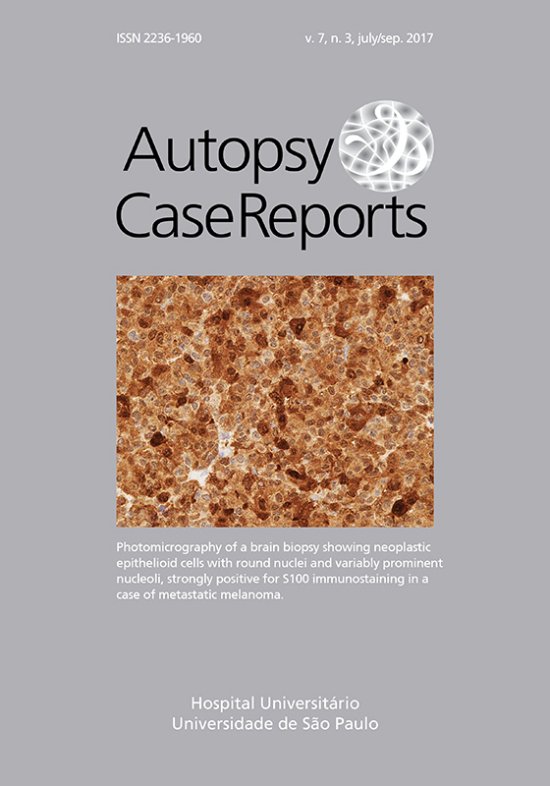Native-valve endocarditis caused by Achromobacter xylosoxidans: a case report and review of literature
DOI:
https://doi.org/10.4322/acr.2017.029Keywords:
Achromobacter, Infective Endocarditis, Native-Valve EndocarditisAbstract
Achromobacter xylosoxidans is a Gram-negative aerobic bacterium first described by Yabuuchi and Ohyama in 1971. A. xylosoxidans is frequently found in aquatic environments. Abdominal, urinary tract, ocular, pneumonia, meningitis, and osteomyelitis are the most common infections. Infective endocarditis is rare. As far as we know, until now, only 19 cases have been described, including this current report. We report the case of community-acquired native valve endocarditis caused by A. xylosoxidans in an elderly patient without a concomitant diagnosis of a malignancy or any known immunodeficiency. The patient presented with a 2-month history of fever, weight loss, and progressive dyspnea. On physical examination, mitral and aortic murmurs were present, along with Janeway’s lesions, and a positive blood culture for A. xylosoxidans. The transesophageal echocardiogram showed vegetation in the aortic valve, which was consistent with the diagnosis of infective endocarditisDownloads
Download data is not yet available.
Published
2017-09-30
Issue
Section
Article / Clinical Case Report
License
Copyright
Authors of articles published by Autopsy and Case Report retain the copyright of their work without restrictions, licensing it under the Creative Commons Attribution License - CC-BY, which allows articles to be re-used and re-distributed without restriction, as long as the original work is correctly cited.
How to Cite
Rodrigues, C. G., Rays, J., & Kanegae, M. Y. (2017). Native-valve endocarditis caused by Achromobacter xylosoxidans: a case report and review of literature. Autopsy and Case Reports, 7(3), 50-55. https://doi.org/10.4322/acr.2017.029



